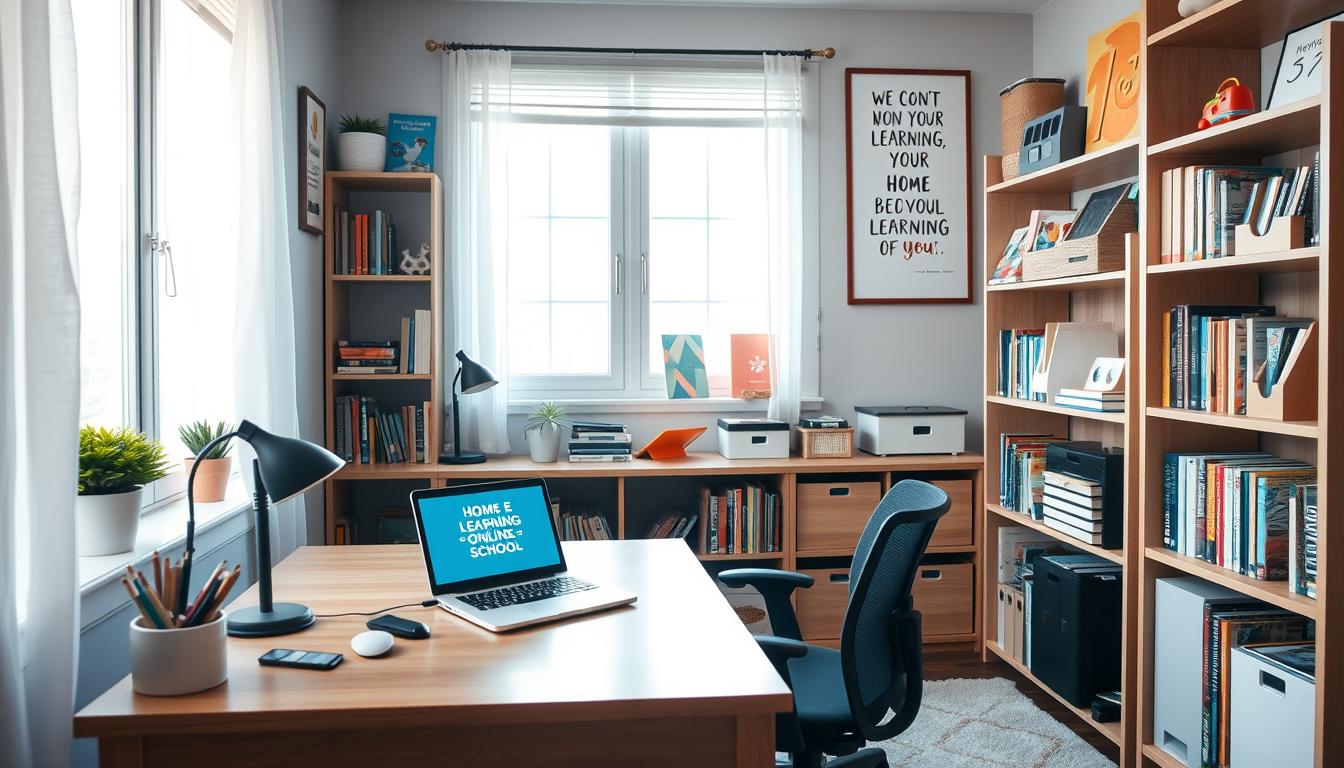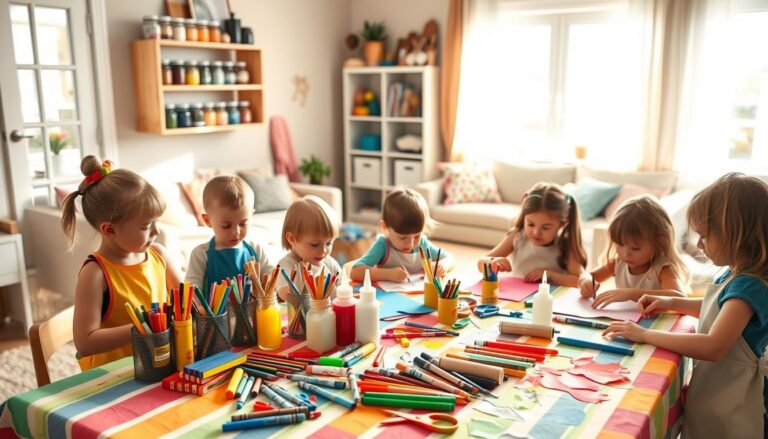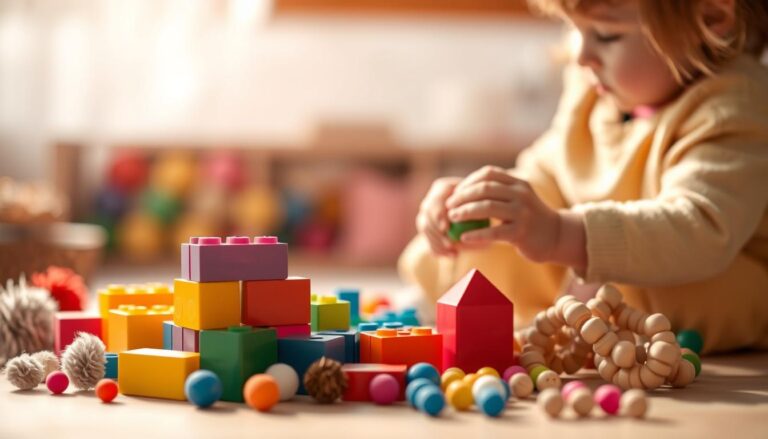Building a Successful Home Learning Space for Children
Creating an effective home learning environment is more than just setting up a desk and chair. It’s about designing a space that fosters both academic and emotional growth, helping children develop a love for learning that lasts a lifetime. As parents and educators, we play a vital role in shaping these environments, ensuring they are engaging, supportive, and tailored to each child’s needs.
A well-structured learning space can make a significant difference in a child’s ability to focus and thrive. By incorporating elements like organized storage, natural light, and age-appropriate activities, we can create an atmosphere that nurtures curiosity and readiness to learn. For instance, setting up a cozy reading nook or incorporating art and music can stimulate creativity and make learning more enjoyable.
Research shows that children who have a dedicated learning space are more likely to stay focused and confident. Parents can take inspiration from resources like 8 Ways to Set Up a Home Learning Space for, which offer practical tips for designing such areas. Additionally, enrolling in programs like the Spoken English Course can further enhance a child’s learning journey by improving communication skills in a structured and interactive way.
By combining these elements—thoughtful design, engaging activities, and supportive resources—we can create a home learning environment that empowers children to grow intellectually and emotionally. In this article, we’ll explore practical strategies and expert insights to help you build a space that supports your child’s educational success.
Understanding the Importance of a Home Learning Space
A dedicated learning space plays a vital role in a child’s academic and emotional growth. It helps create a routine, making it easier for children to transition into a learning mindset. Parents act as role models, showing the importance of education through their involvement.
The Role of Family and Parental Involvement
Family support is key to a child’s success. Parents who take an active role in their child’s learning set a positive example. Simple actions, like discussing school activities, can boost a child’s confidence and performance. Research shows that parental involvement significantly impacts academic outcomes.
Impact on Academic and Emotional Development
A well-designed learning environment fosters focus and curiosity. It also supports emotional well-being by providing a stable space for children to grow. A structured area helps children develop better time management and study habits, leading to improved academic results and self-esteem.
- Encourage learning by creating a quiet, distraction-free zone.
- Use age-appropriate materials to spark interest and engagement.
- Set aside dedicated time each day for study and reading.
By transforming everyday moments into learning opportunities, parents can create a nurturing atmosphere that supports their child’s educational journey.
Creating an Effective Home Learning Environment
Designing a space that supports academic growth involves careful planning and attention to detail. A well-structured environment not only enhances focus but also nurtures a child’s curiosity and love for learning.
Key Elements of an Enriched Learning Space
A successful learning space begins with clear structure and organization. Parents can create a distraction-free zone by using simple, child-friendly storage solutions. Allocating specific areas for different activities, such as reading or writing, helps establish a routine. Incorporating natural light and comfortable seating can make the space inviting and conducive to concentration.
Age-appropriate resources are essential. Whether it’s a set of colorful pencils or an engaging educational app, these tools keep children interested and motivated. Tailoring the environment to suit individual learning styles ensures that each child can thrive in their own way.
Utilizing Quality Learning Resources at Home
Combining digital and print materials enriches a child’s educational experience. Interactive tools, like educational apps, provide dynamic learning opportunities. Books and workbooks offer a tactile experience, helping reinforce new skills. Parents can also draw from online resources, such as educational videos or interactive websites, to supplement traditional learning materials.
Research highlights the benefits of diverse learning resources. For example, studies show that children exposed to both digital and print materials often perform better academically. By providing a variety of resources, parents can cater to different learning preferences and keep their child engaged.
Designing Age-Appropriate Learning Spaces
As children grow, their learning needs evolve. A space that works for a young child may not suit a teenager. Tailoring the environment to their age ensures they stay engaged and focused.
Tailoring Spaces for Younger Children
Younger children thrive in playful, safe spaces that encourage exploration. Think colorful toys, soft cushions, and interactive tools. These elements spark curiosity and make learning fun. For example, a cozy reading corner with engaging books can foster a love for reading early on.
Age-appropriate materials are key. Puzzles, building blocks, and art supplies keep young minds active without overwhelming them. Parents can also incorporate natural elements, like plants, to create a calming atmosphere that promotes focus.
Clutter and distractions should be minimized. A neat, organized space invites exploration and creativity, helping children develop better focus and responsibility.
Adapting Environments for Teen Learners
Teenagers need a more structured and private space that supports independent study. A quiet, well-lit area with a sturdy desk and comfortable seating is ideal. Incorporating good lighting, whether natural or LED, can boost concentration and productivity.
Technology plays a big role here. A reliable computer or tablet and access to educational apps can enhance learning. However, balancing screen time with traditional study materials, like textbooks, ensures a well-rounded approach.
Personalization is important. Let teens add personal touches, like posters or photos, to make the space their own. This sense of ownership can motivate them to stay organized and focused.
By designing spaces that grow with children, parents can support their academic and emotional development. Whether it’s a playful area for young kids or a structured space for teens, the right environment fosters a lifelong love for learning.
Strategies to Foster Independent Learning and Engagement
Empowering children to take charge of their education is a cornerstone of a successful learning environment. By implementing structured routines and clear expectations, parents can help their children develop self-motivation and a sense of responsibility.
Encouraging Self-Motivation and Responsibility
A well-organized daily schedule is essential. Start with setting specific times for study, play, and family activities. This structure helps children understand the importance of balancing work and leisure. Parents can create a simple checklist or calendar to guide their child through the day.
Integrating responsibilities into the daily routine teaches accountability. Assign age-appropriate tasks, such as organizing their study space or managing their time. These small steps help build a sense of ownership over their learning journey.
For younger children, using visual reminders like charts or stickers can make the process fun and engaging. As they grow, parents can introduce more advanced tools like planners or digital apps to help them stay organized.
Regular communication with teachers and providing constructive feedback are key. Parents should act as supportive guides, helping their child set achievable goals and celebrate progress. This collaborative approach fosters a positive mindset and encourages children to take initiative in their learning.
- Establish a consistent daily routine with dedicated time for study and play.
- Use checklists or planners to help children stay organized.
- Encourage goal-setting and celebrate progress to build motivation.
- Provide constructive feedback and support without micromanaging.
By creating a balanced and supportive environment, parents can help their children develop the skills needed for independent learning. This approach not only enhances academic performance but also nurtures a lifelong love for learning.
Integrating Technology, Organization, and Parent-Teacher Collaboration
As we navigate the evolving landscape of education, integrating technology, maintaining organization, and fostering strong parent-teacher collaboration have become essential components of a successful learning environment. These elements work together to create a cohesive space that supports a child’s academic journey. By leveraging digital tools, keeping the learning area organized, and ensuring open communication between parents and educators, we can build a foundation that promotes engagement and success.
Leveraging Digital Tools to Minimize Distractions
Digital tools play a crucial role in modern learning. Parents can use software like Mobile Guardian to set boundaries and limit distractions during study time. Noise-cancelling headphones are another effective tool to help children focus. By integrating these technologies, families can create a structured environment that supports concentration and productivity.
- Use apps and software to block non-educational websites during study hours.
- Incorporate noise-cancelling accessories to reduce environmental distractions.
- Set clear time boundaries for online activities to maintain focus.
Maintaining an Organized and Productive Space
A well-organized physical space complements digital initiatives. Designate specific areas for different activities, such as reading or writing, to establish a routine. Use storage solutions that are both functional and child-friendly to keep materials within easy reach. This balance between digital and physical organization ensures a harmonious learning environment.
- Assign specific zones for different learning activities.
- Use colorful storage bins to keep supplies organized and accessible.
- Ensure the space is clutter-free to promote focus and creativity.
Collaborating with Educators and Utilizing Feedback
Parent-teacher collaboration is vital for a child’s success. Regular communication through emails, updates, and meetings helps parents stay informed about their child’s progress. By working together, parents and teachers can address challenges promptly and celebrate achievements, fostering a supportive network that enhances learning outcomes.
- Schedule regular check-ins with teachers to discuss progress.
- Use digital platforms for consistent communication and feedback.
- Participate in school activities to show support and engagement.
By integrating technology, maintaining organization, and fostering collaboration, parents and educators can create a learning environment that empowers children to thrive academically and emotionally. This holistic approach ensures that each child receives the support they need to succeed in their educational journey.
Conclusion
In conclusion, fostering a positive learning environment at home is a powerful way to support your child’s educational journey. By designing a space that adapts to their age and learning style, you create opportunities for growth and exploration. Parents, educators, and technology all play vital roles in nurturing this environment.
Reflect on the strategies shared in this article to refine your approach. Visit this resource for insights on crafting a supportive atmosphere. For older students, explore the high-school programs that blend flexibility with structured learning.
Remember, a well-crafted learning space not only enhances academic success but also shapes a child’s emotional and social well-being. Let’s work together to build environments that inspire and empower learners for life.







